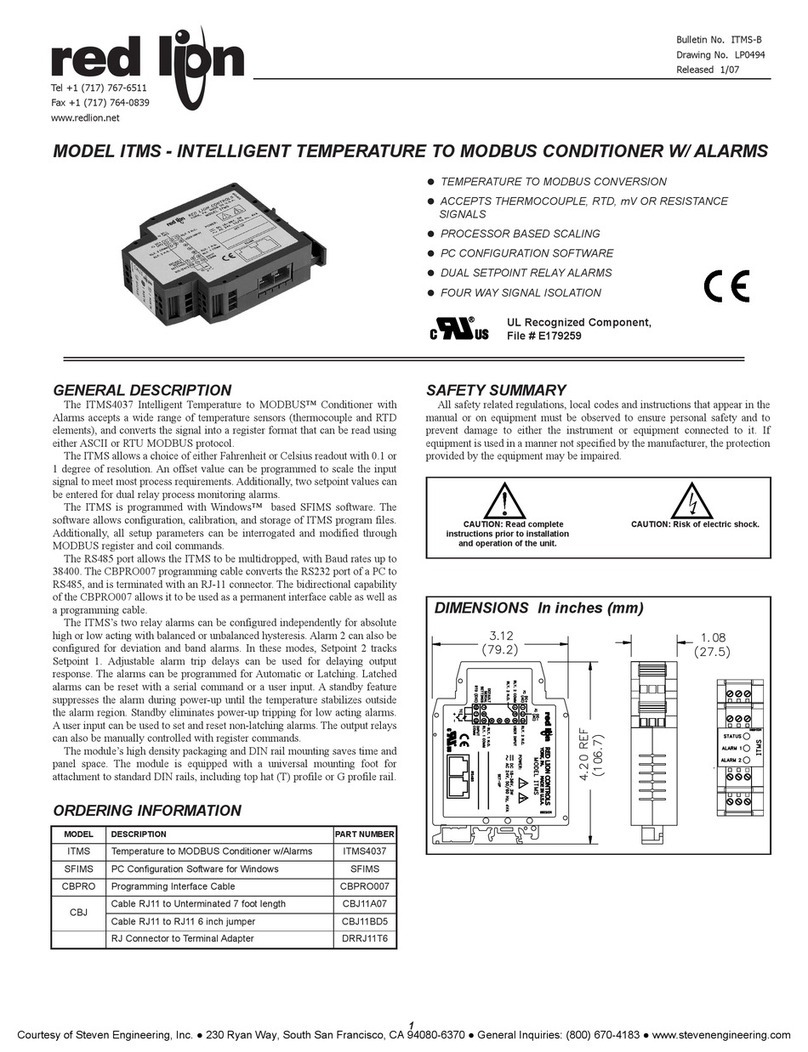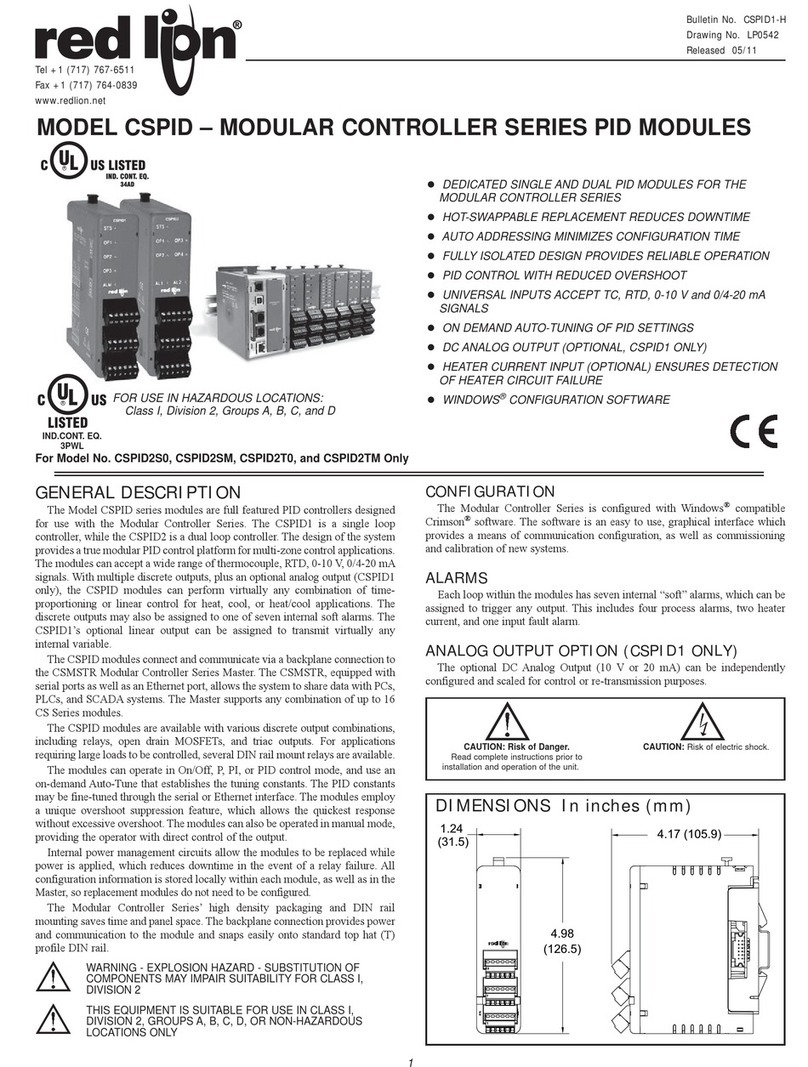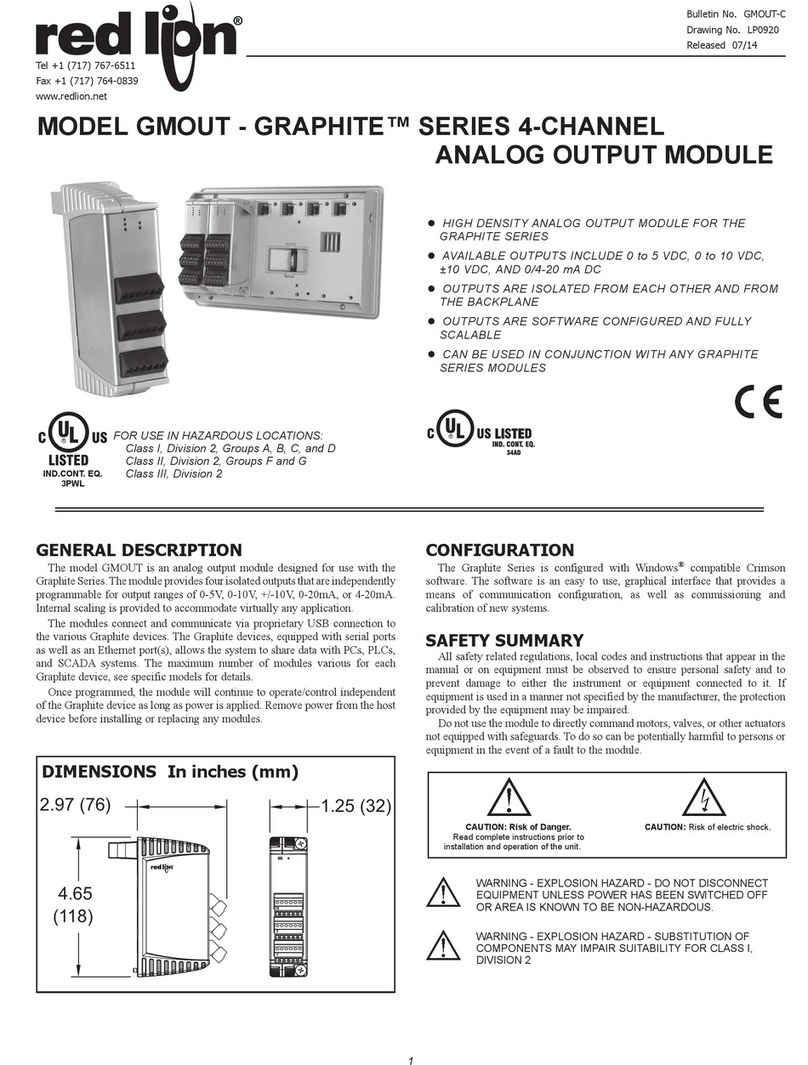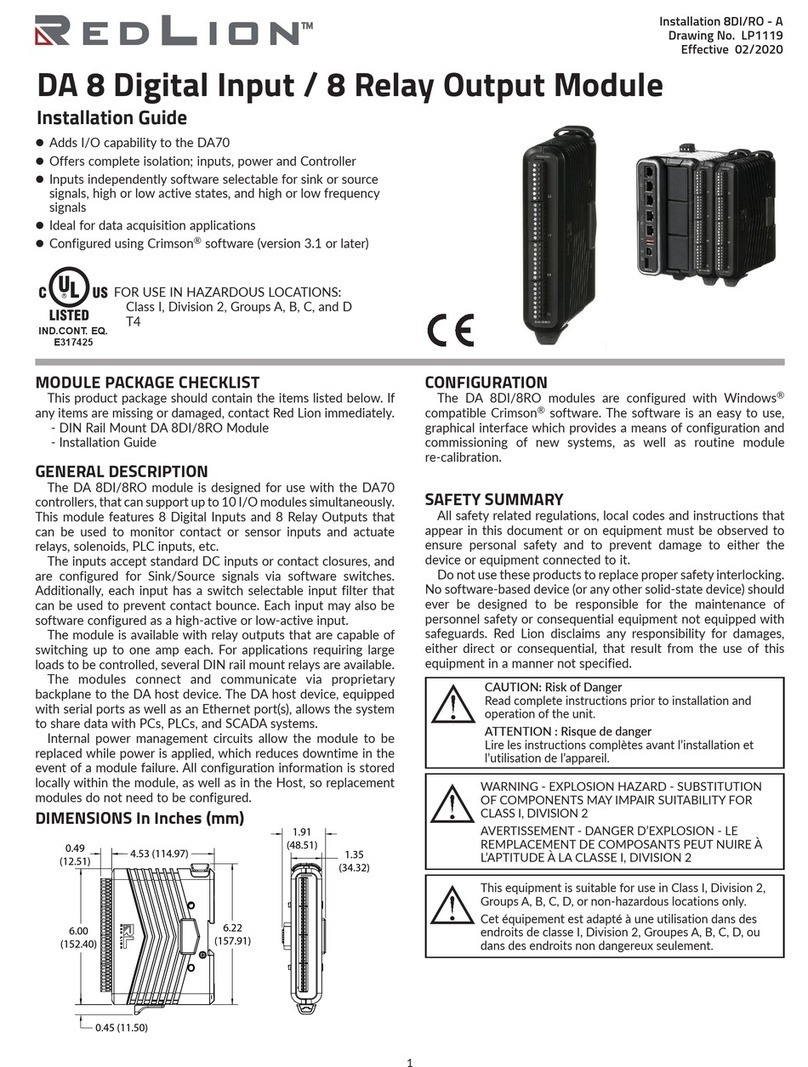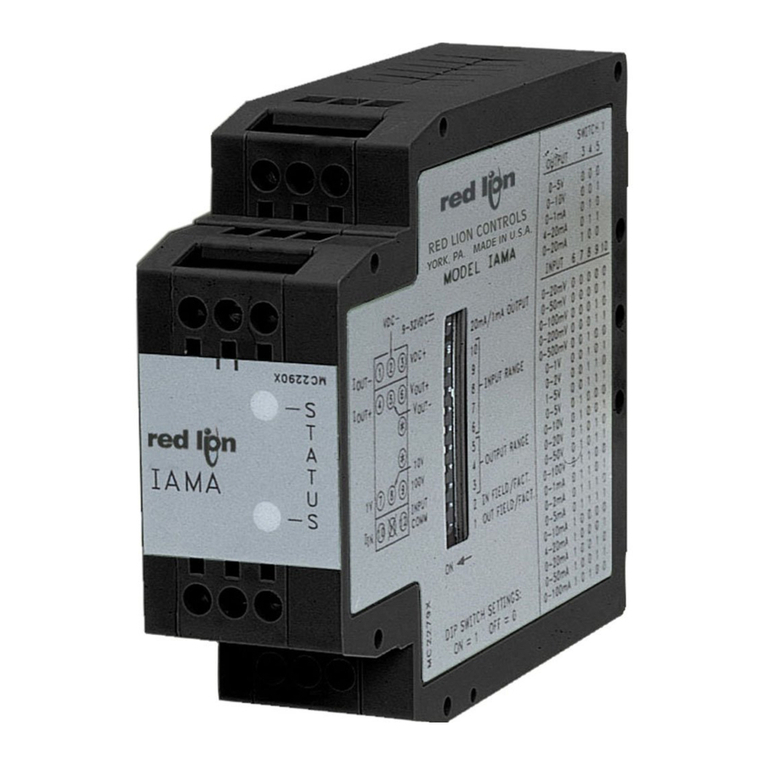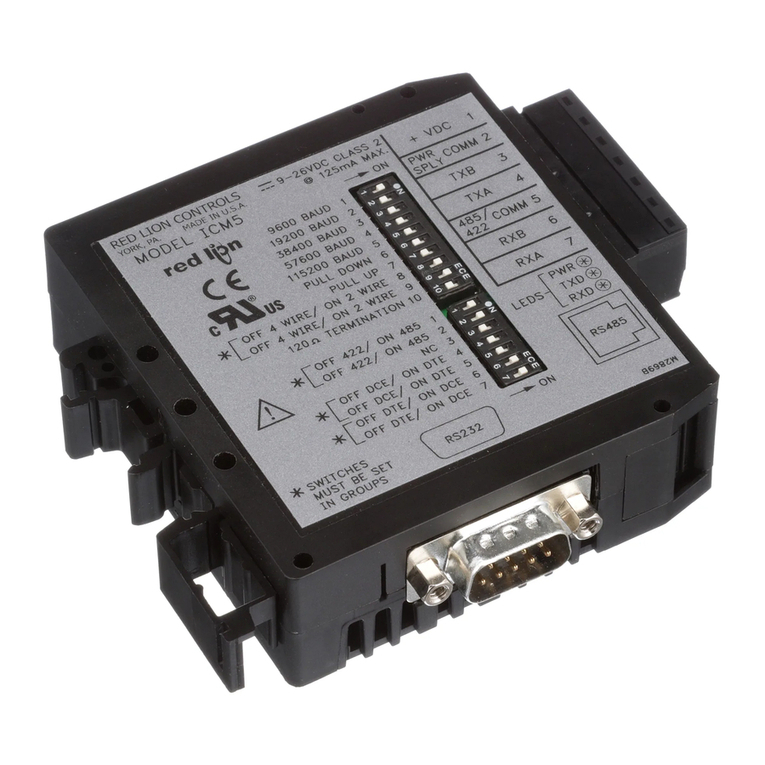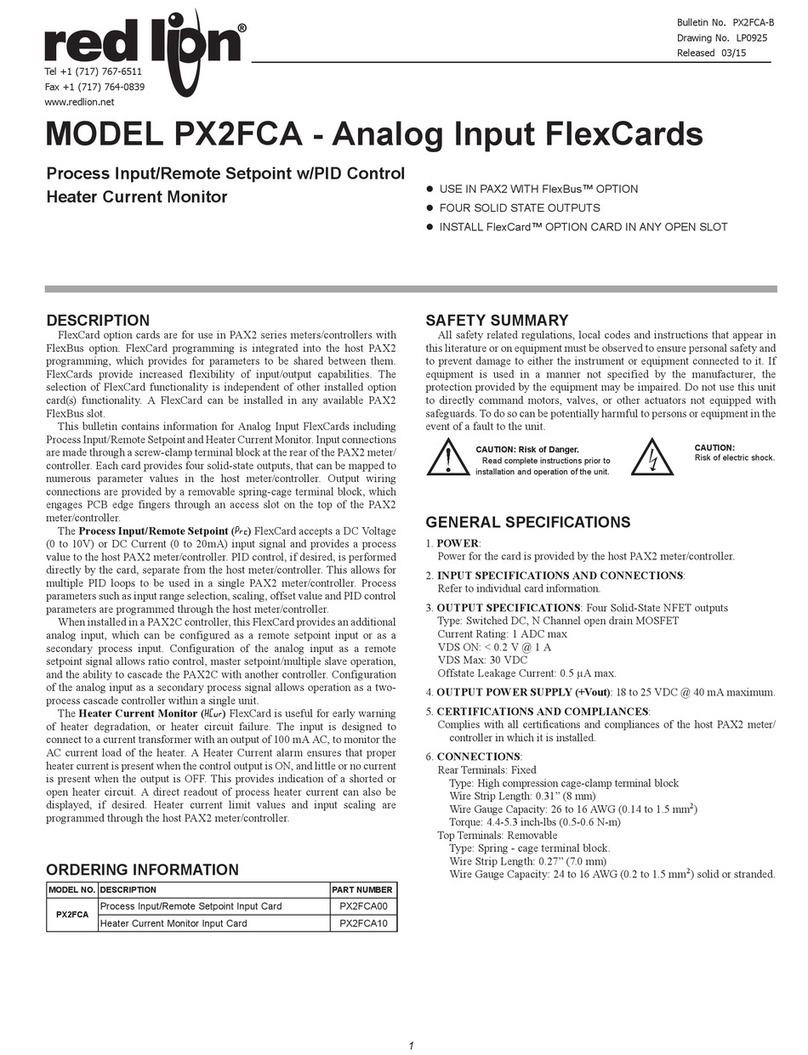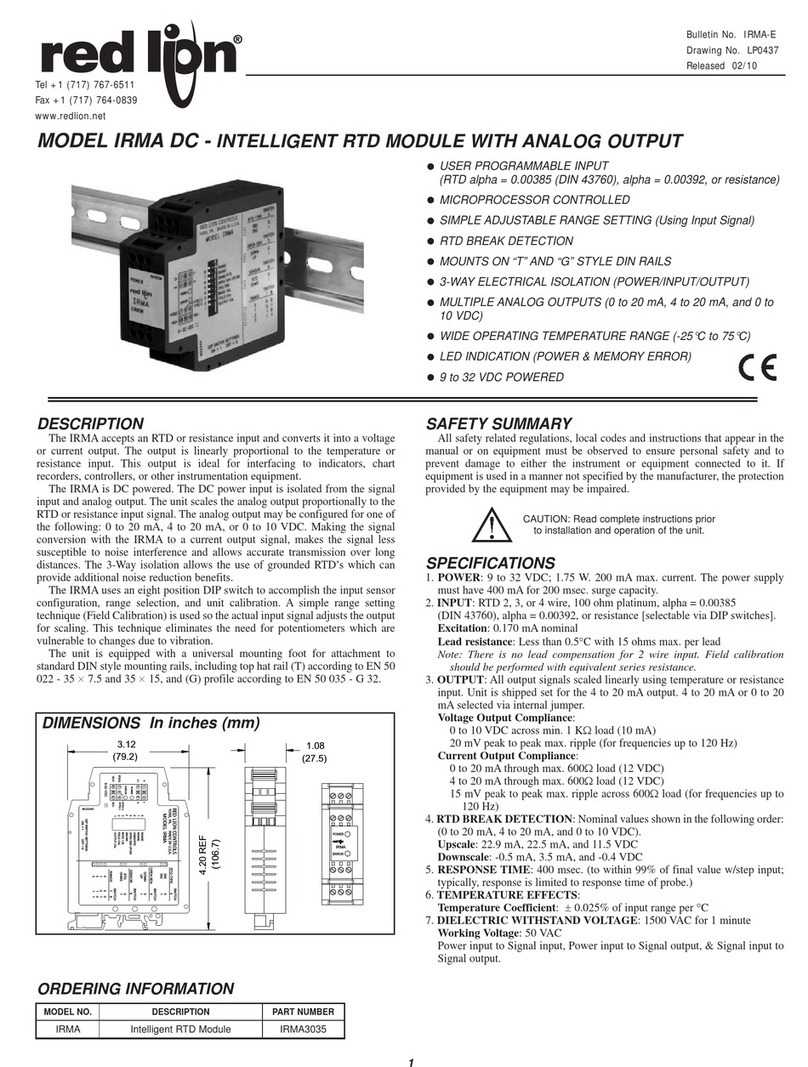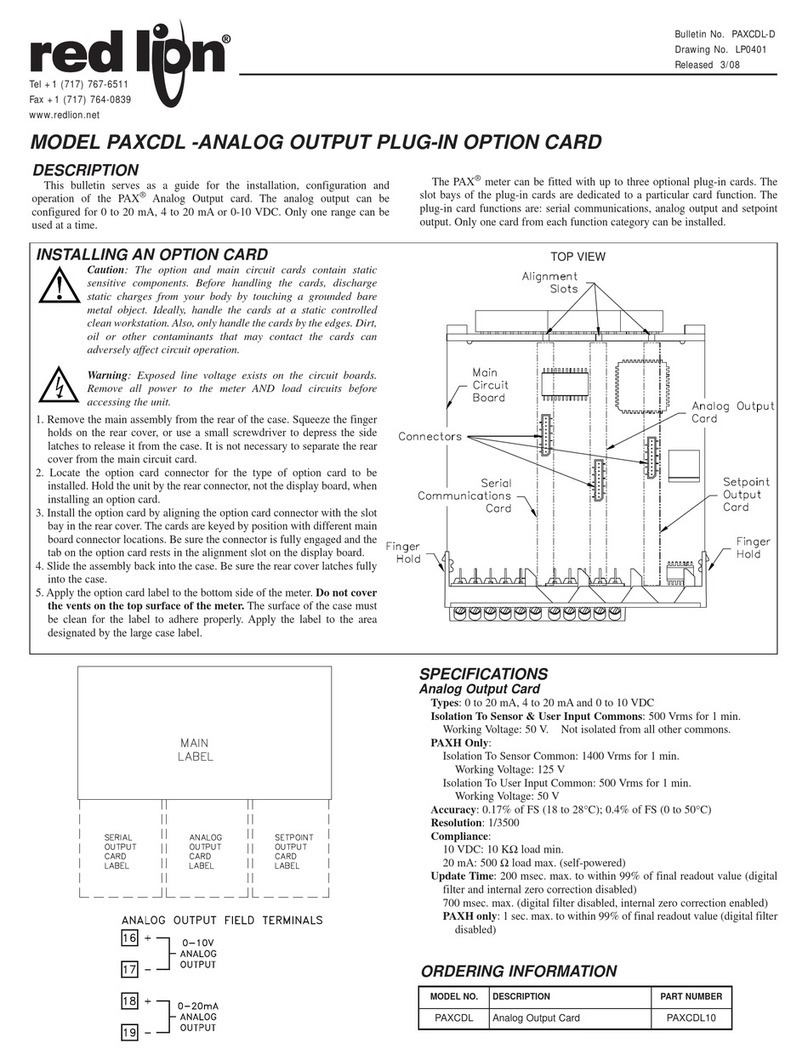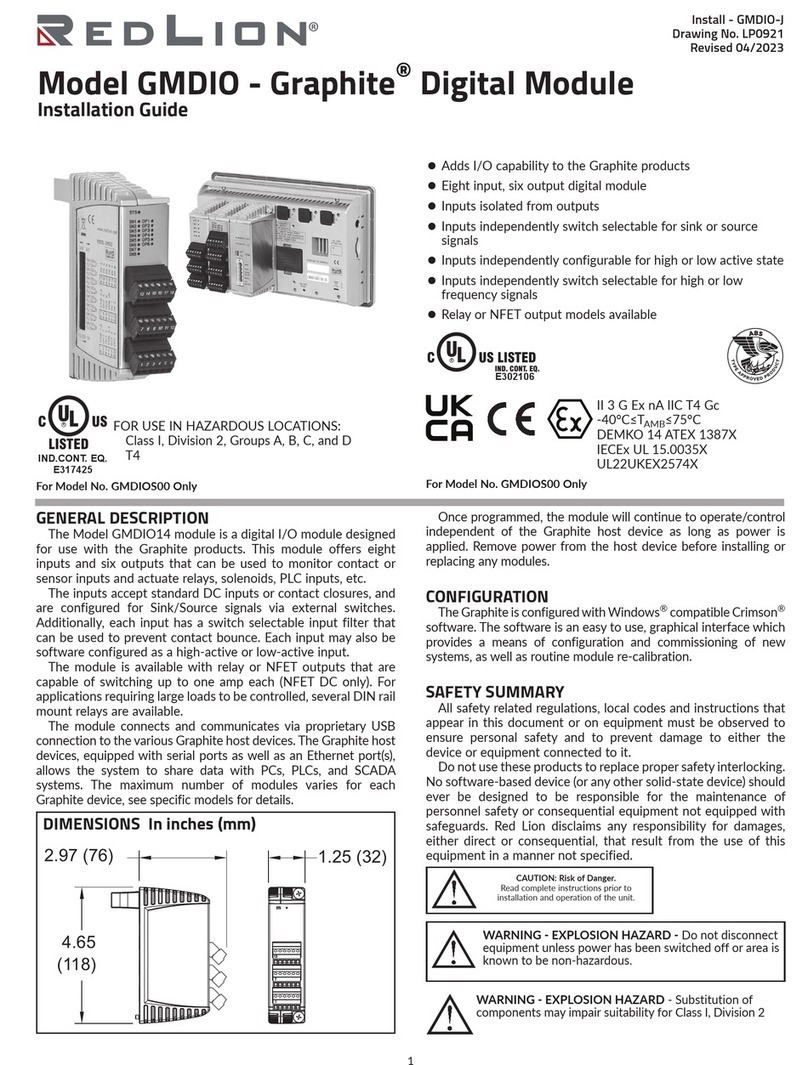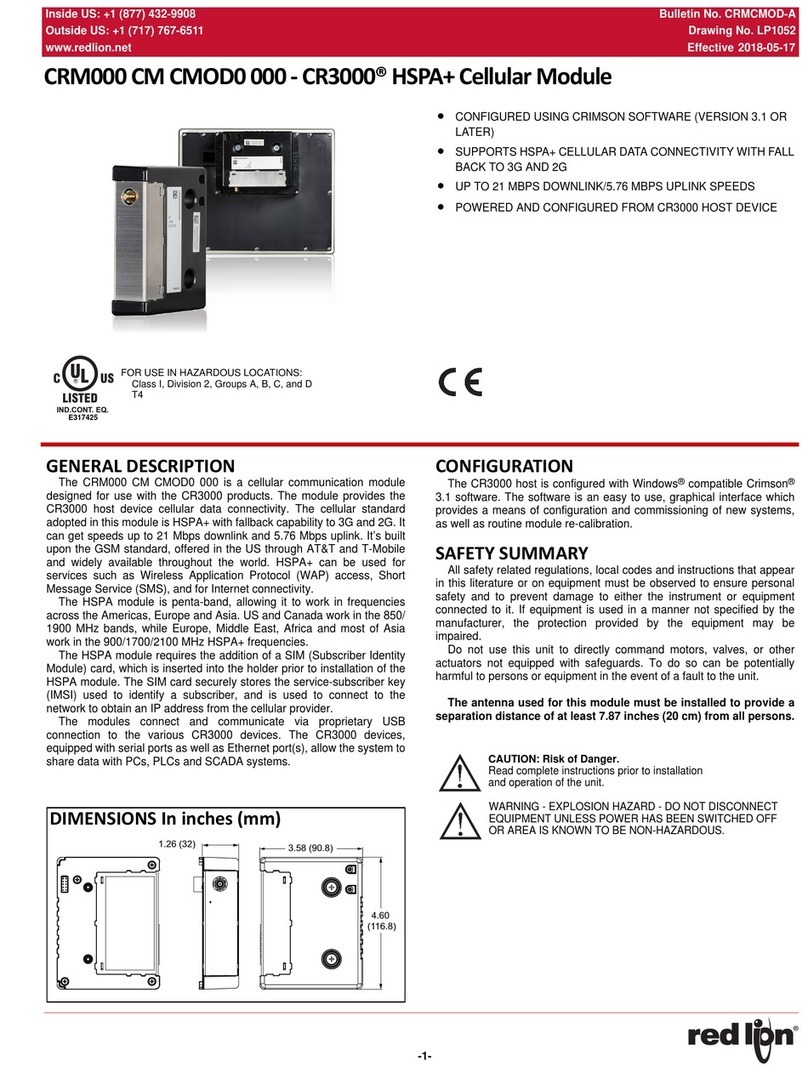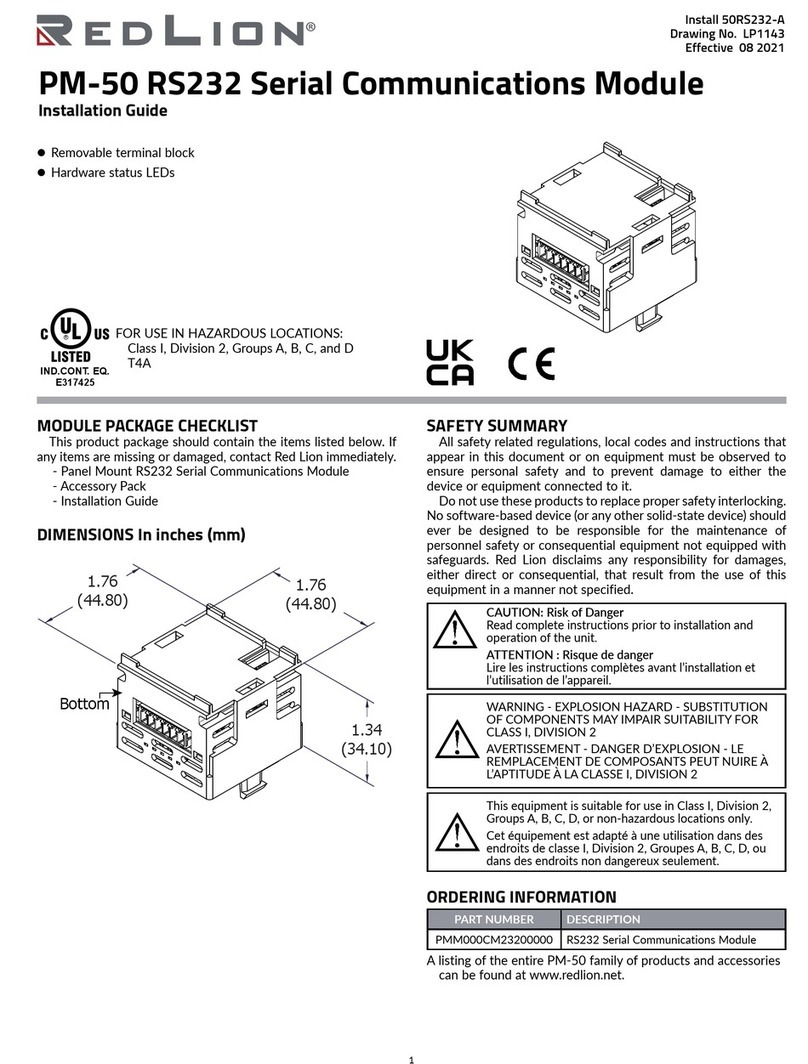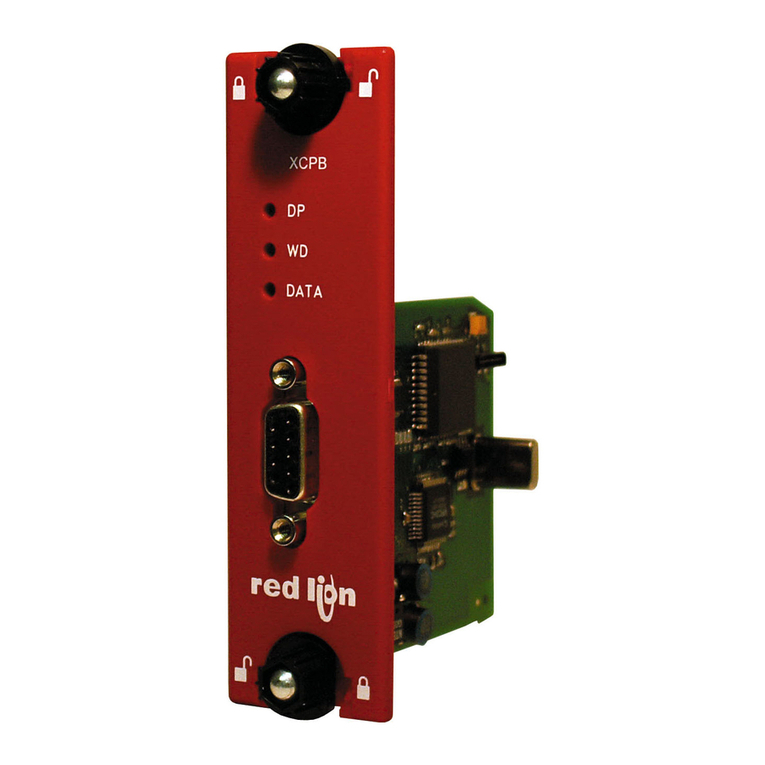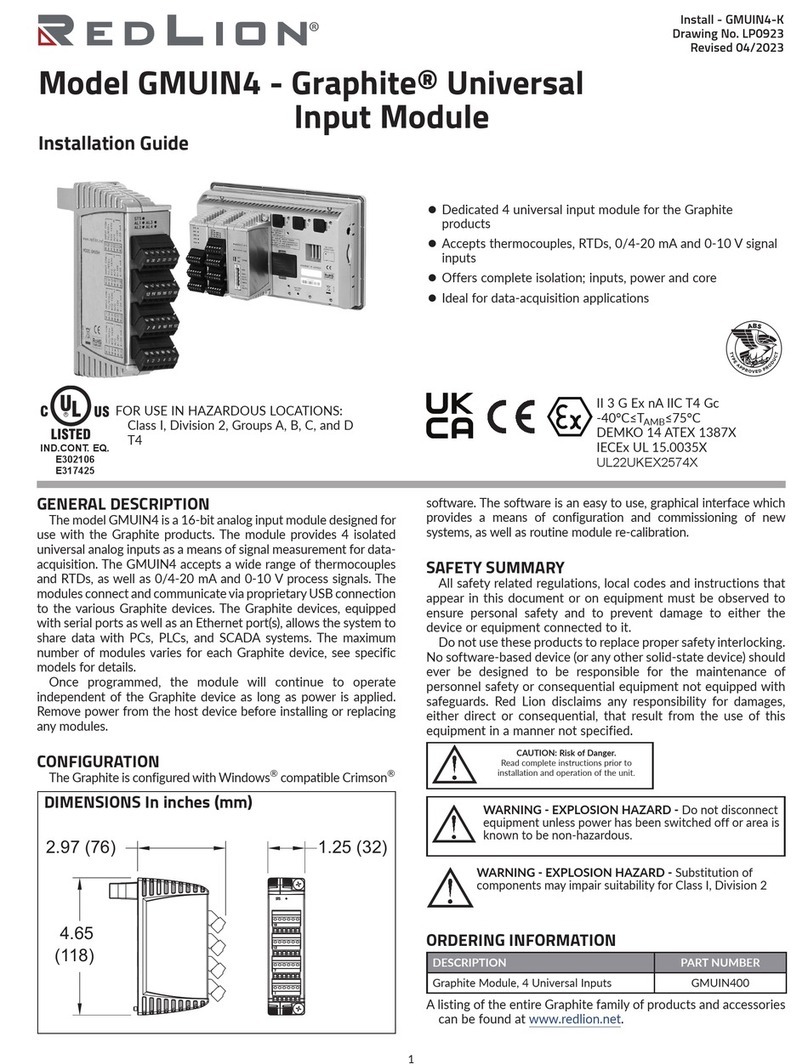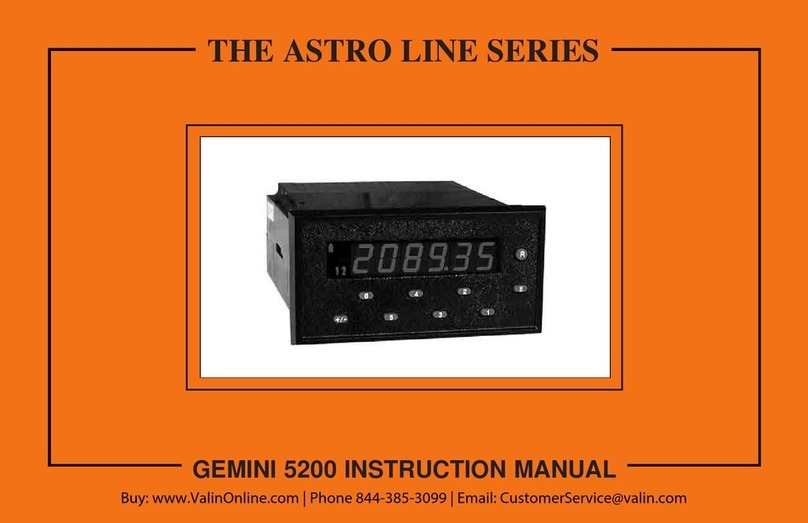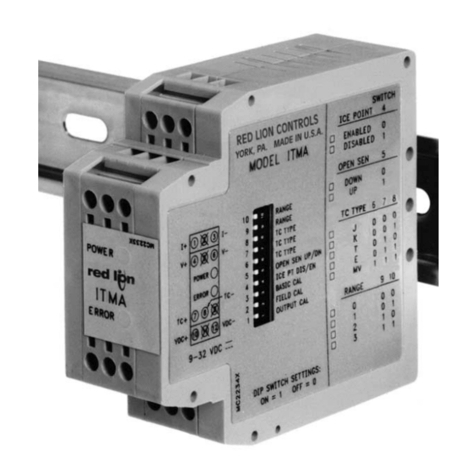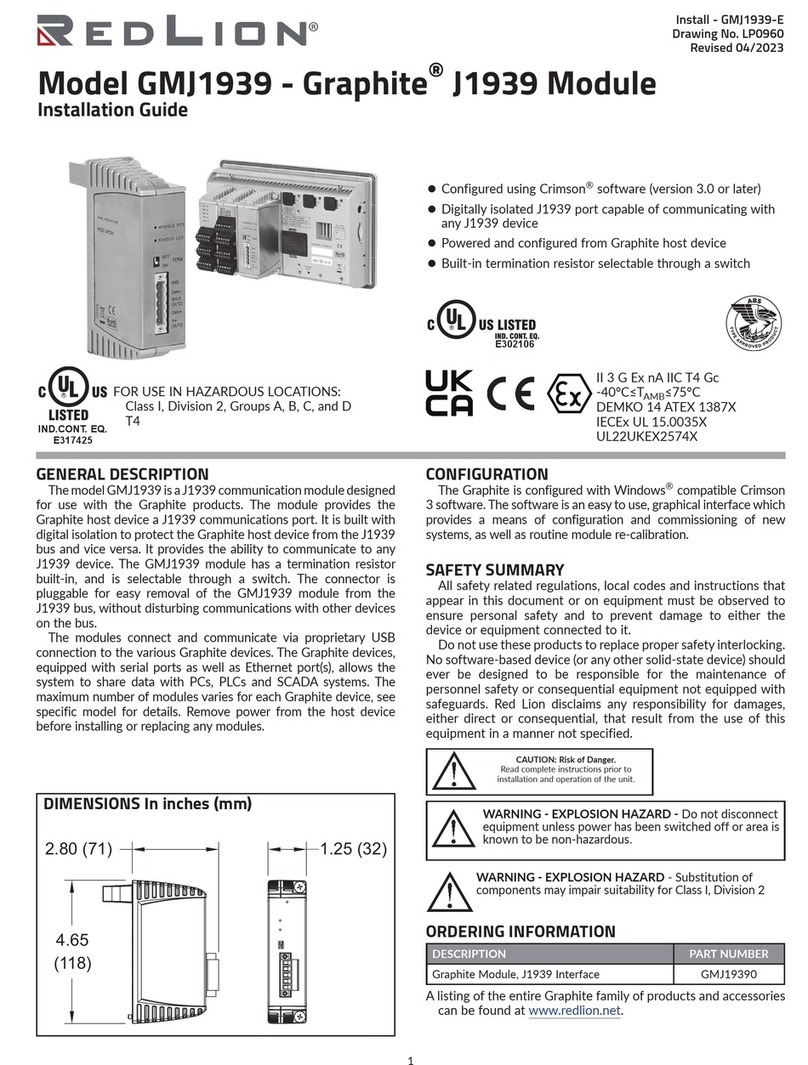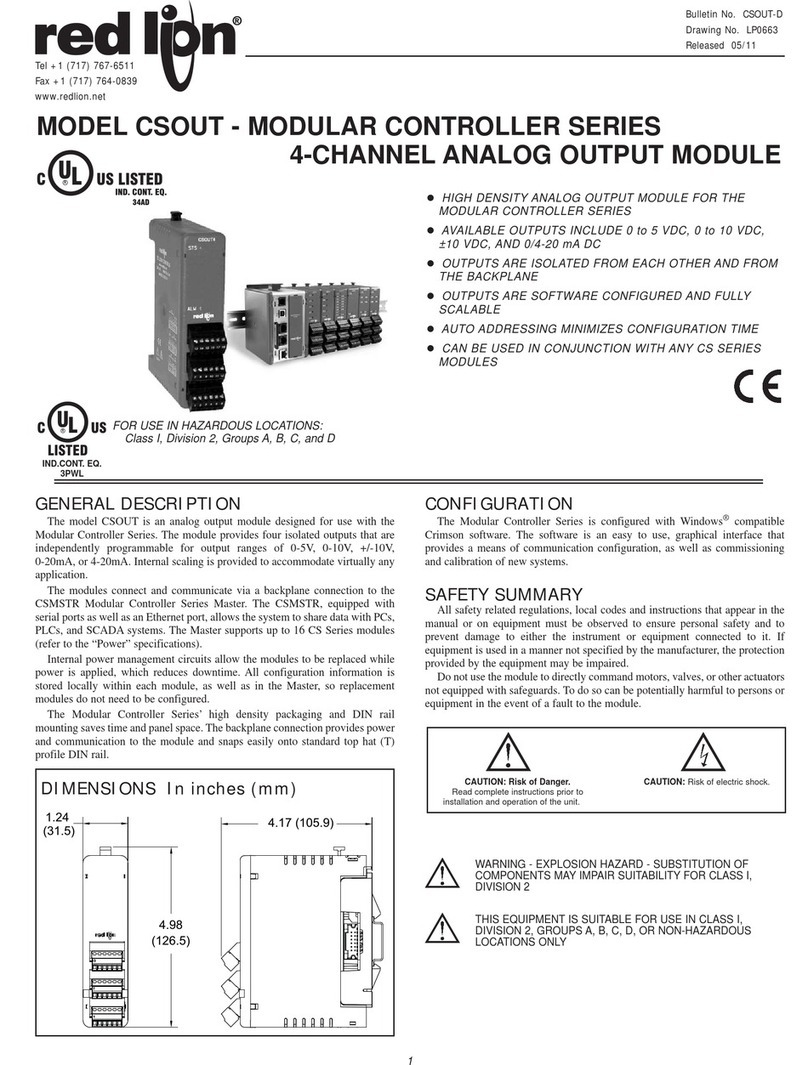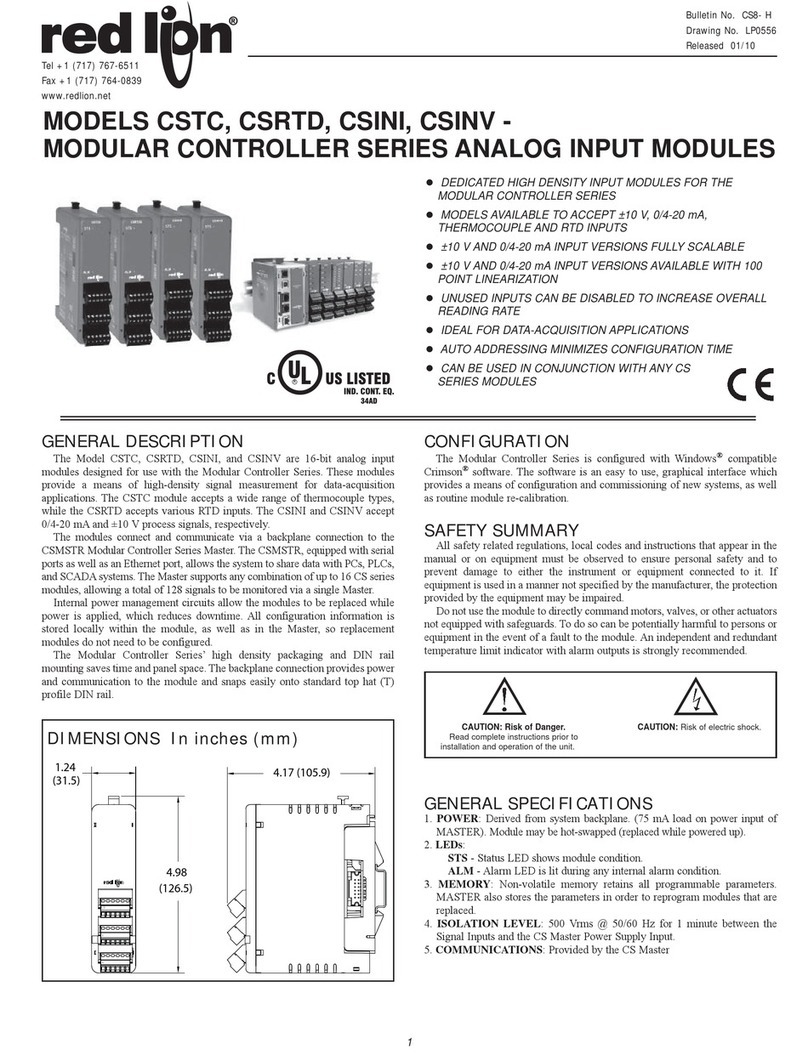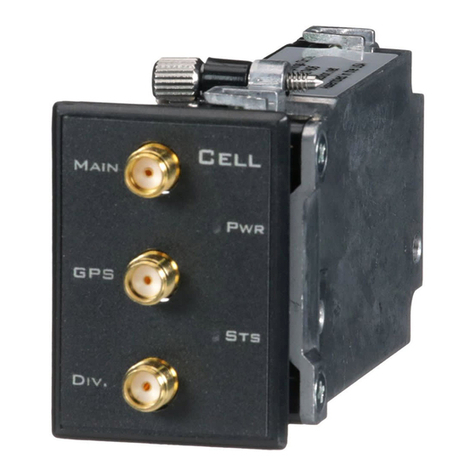
2
Drawing No. LP0993 Revised 04/2023
SPECIFICATIONS
1. POWER: Power will be supplied by the Graphite host device.
Some modules, depending on usage may consume high levels
of power. This may limit the total number of modules that can
be installed on a single Graphite host. Check the Graphite
module and Graphite host data sheets for specific usage and
power requirements.
GMCC Max Power: 1.1 W
2. LEDS:
STS - Status LED shows module condition.
3. ENVIRONMENTAL CONDITIONS:
Operating Temperature Range: -40 to +75 °C TAMB, or lowest
range among equipment used in your Graphite system.
Consult the user manual or www.redlion.net/OpTemp for
further details.
Storage Temperature Range: -40 to +85 °C TAMB
Operating and Storage Humidity: 85% max relative humidity,
non-condensing
Altitude: Up to 2000 meters
4. CERTIFICATIONS AND COMPLIANCES:
CE Approved
EN 61326-1 Immunity to Industrial Locations
IEC/EN 61010-1
RoHS Compliant
ATEX Approved
II 3 G Ex nA IIC T4 Gc
DEMKO 14 ATEX 1387X
EN 60079-0, -15
IECEx Approved
Ex nA IIC T4 Gc
IECEx UL 15.0035X
IEC 60079-0, -15
UKEX Approved
UL22UKEX2574X
UL Listed: File #E302106
UL Hazardous: File #E317425
ABS Type Approval for Shipboard Applications
5. CONSTRUCTION: Case body is all metal construction.
6. CONNECTIONS: Removable wire clamp screw terminal block.
7. MOUNTING: Screws to host.
8. WEIGHT: 6.7 oz (189.9 g)
PORT 3
ETHERNET
D
ISOLATED
ISOLATED
ISOLATED
A
POWER
SUPPLY
+
-
VDC
GRAPHITE HOST GMCC
PORT 2
C
COMMUNICATIONS
B
PORT 1
PROGRAMMING
POWER
SUPPLY
Block Diagram for GMCC
EMC INSTALLATION GUIDELINES
Although Red Lion Controls products are designed with a high
degree of immunity to Electromagnetic Interference (EMI), proper
installation and wiring methods must be followed to ensure
compatibility in each application. The type of the electrical noise,
source or coupling method into a unit may be different for various
installations. Cable length, routing, and shield termination are
very important and can mean the difference between a successful
or troublesome installation. Listed are some EMI guidelines for a
successful installation in an industrial environment.
1. A unit should be mounted in a metal enclosure, which is
properly connected to protective earth.
2. Use shielded cables for all Signal and Control inputs. The
shield connection should be made as short as possible. The
connection point for the shield depends somewhat upon the
application. Listed below are the recommended methods of
connecting the shield, in order of their effectiveness.
a. Connect the shield to earth ground (protective earth) at one
end where the unit is mounted.
b. Connect the shield to earth ground at both ends of the cable,
usually when the noise source frequency is over 1 MHz.
3. Never run Signal or Control cables in the same conduit or
raceway with AC power lines, conductors, feeding motors,
solenoids, SCR controls, and heaters, etc. The cables should
be run through metal conduit that is properly grounded. This
is especially useful in applications where cable runs are long
and portable two-way radios are used in close proximity or if
the installation is near a commercial radio transmitter. Also,
Signal or Control cables within an enclosure should be routed
as far away as possible from contactors, control relays,
transformers, and other noisy components.
4. Long cable runs are more susceptible to EMI pickup than
short cable runs.
5. In extremely high EMI environments, the use of external EMI
suppression devices such as Ferrite Suppression Cores for
signal and control cables is effective. The following EMI
suppression devices (or equivalent) are recommended:
Fair-Rite part number 0443167251 (Red Lion #FCOR0000)
Line Filters for input power cables:
Schaffner # FN2010-1/07 (Red Lion #LFIL0000)
6. To protect relay contacts that control inductive loads and to
minimize radiated and conducted noise (EMI), some type of
contact protection network is normally installed across the
load, the contacts or both. The most effective location is
across the load.
a. Using a snubber, which is a resistor-capacitor (RC) network or
metal oxide varistor (MOV) across an AC inductive load is very
effective at reducing EMI and increasing relay contact life.
b. If a DC inductive load (such as a DC relay coil) is controlled
by a transistor switch, care must be taken not to exceed the
breakdown voltage of the transistor when the load is
switched. One of the most effective ways is to place a
diode across the inductive load. Most Red Lion products
with solid state outputs have internal zener diode
protection. However external diode protection at the load is
always a good design practice to limit EMI. Although the
use of a snubber or varistor could be used.
Red Lion part numbers: Snubber: SNUB0000
Varistor: ILS11500 or ILS23000
7. Care should be taken when connecting input and output
